Transforming how we move: How Huawei’s cloud solutions help to manage increasing scale
Posted: 4 November 2020 | Huawei | No comments yet
Huawei’s cloud solutions, including its Digital Urban Rail and eLTE Wireless Communications solutions, are helping to manage the increasing scale of urban rail lines.
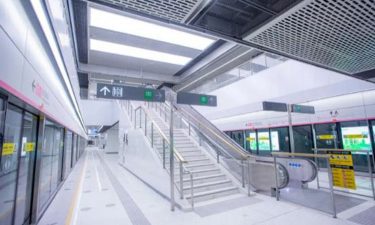

Inside Shenzhen Metro
With significantly increasing scale and passenger volume, there is a high demand for urban rail lines to be integrated into multi-line networks that require more efficient, smart operations. Such growth poses new challenges to ICT systems. Automatic train operation (ATO) has the potential to be particularly beneficial, but it requires extensive, reliable information systems and service linkage.
Unfortunately, urban rail lines operate independently and lack consistent service architecture, technical platforms and data. Scattered IT devices are unable to support the unified operation of multiple lines. Given this existing IT architecture, it is difficult to share urban rail construction and operations experience or to innovate services. Yet, a smart cloud platform can offer secure infrastructure that accelerates the transition from single-line to multi-line operations. Huawei offers its cloud solutions to address the challenges, making the management of large-scale railway networks easier.
Huawei’s urban rail cloud platform centrally carries ISCS, AFC, PIS, ACS and CCTV, as well as other application systems. The platform integrates resources and standardises architecture and data. This facilitates resource sharing, on-demand allocation and flexible scaling, supported by unified operations, collaborative services, data and standardised and normalised services, as well as unified and platform-based resources and architecture. The platform helps customers transform from single-line to multi-line operations, and lays a solid foundation for closer service linkage and the deployment of big data analytics.
Deployment of Huawei’s 4G LTE technologies in Ethiopia
Addis Ababa – the capital city of Ethiopia and the country’s economic and transportation hub – has a high population density and traffic congestion. To ease the latter, the Ethiopian government invested $475 million into the Addis Ababa Light Rail Transit project.
Ethiopia’s light-rail project marks the first time that Huawei’s LTE technologies have been applied to light-rail voice dispatch and ticketing data transmission. Huawei won the project with its innovative LTE technologies, featuring powerful broadband voice and data concurrent transmission and multi-product solutions, providing a comprehensive, integrated communications network and basic support for Ethiopia’s light-rail transit project.
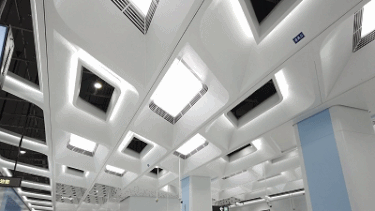

Project requirements
- The customer needed one wireless network to deliver trunking and ticketing services, and one wired backbone network to carry communications, signalling, ticketing and Supervisory Control And Data Acquisition (SCADA) services. Unified multiple services are expected to reduce trackside equipment
- Centralised storage and the unified management of videos generated along the entire railway lines were required to reduce equipment costs. All IP Cameras (IPCs) deployed were required to provide HD video surveillance images to facilitate railway operations. Another necessity required that the IPCs support dual code streams, since low-bit-rate resources take up less storage space
- The orderwire system and private phone system needed to be combined to reduce the number of devices
- It was essential that equipment at each station was able to access substations through access networks free from any single point of failure. The access equipment was expected to perform well, even under adverse trackside environmental conditions
- A network management system was needed to ensure the unified management of the communication systems. The network management system uniformly collects and manages alarms from communication systems.
The Huawei Digital Urban Rail Solution integrates sub-solutions, such as urban rail LTE-M, and dedicated urban rail communication networks for delivering HD video surveillance. The network enables rich services, such as wireless dispatch, video surveillance, data storage and unified communication telephony. The solution provides a comprehensive and integrated communications network with basic support for Ethiopia’s light rail transit project.
How Huawei’s Digital Urban Rail Solution was the solution
- The innovative Huawei Digital Urban Rail Solution allows both real-time and non-real-time services, such as communications, signalling, ticketing, electric power monitoring, voice and data to be carried on a single network. It also provides air-interface encryption functions and board redundancy protection for core network platforms, greatly improving network reliability and security
- The system features low latency, a high performance dispatching platform and a flattened network architecture. By integrating multiple networks, such as the communication and ticketing networks, the system enables real-time wireless transmission of large amounts of data for the ticketing system and allows concurrent voice dispatching and data transmission
- Huawei provides distributed storage, with storage devices deployed on both South-North and East-West railway lines. This lowers costs and improves reliability. Dual code stream HD IPCs were deployed at front-end surveillance sites to support HD video browsing and Standard-Definition (SD) storage
- Industrial Access Routers (ARs) were deployed at each station/grade crossing to form Smart Ethernet Protection (SEP) rings, improving the reliability of the access network
- Huawei’s proprietary eSight, a unified network management system, monitors the performance and running status of the network-wide equipment. The graphical interface ensures easier management and its fault correlation analysis function rapidly locates faults. The system provides diverse alarm management approaches, such as sending sound and optical signals, SMS notifications and emails. In addition, the system manages a wide array of devices from more than 30 manufacturers. It interconnects with all communication subsystems via Simple Network Management Protocol (SNMP) to centrally collect alarm data, so it is not necessary to deploy individual alarm systems.
Improving rail services on Shenzhen’s Metro Line 11
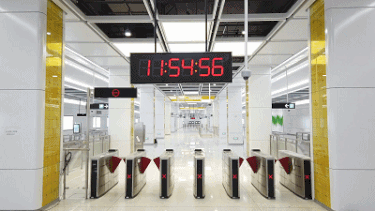

Challenges presented by the project
Traversing to the airport, Line 11 experiences complex electromagnetic conditions. This causes strict demands on the train-to-ground wireless network in terms of mobility, reliability and anti-interference capability. The metro train-to-ground wireless network provides large-bandwidth services, such as onboard video surveillance, passenger information delivery and advertisement pushes. It is an important metro subsystem to provide value-added services and improve passenger experiences.
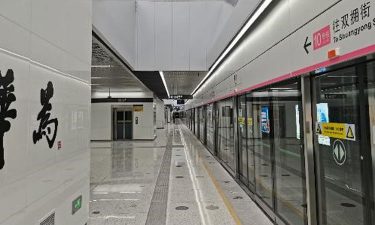

Huawei Station on Shenzhen Metro Line 10
Wireless Local Area Network (WLAN) technologies are universally applied to traditional train-to-ground wireless network solutions. However, the Communication-Based Train Control (CBTC) system uses WLAN technologies to operate on the public frequency band of 2.4 GHz with insufficient available frequencies. This makes it extremely complicated to plan, design and deploy WLANs. Metro lines using traditional solutions have numerous track-side Access Points (APs), which cause high transmit power and dense interference. Additionally, the prevalence of operators’ 3G and 4G networks exponentially increases the number of mobile phone Wi-Fi hot spots. This deteriorates the operating environment for WLANs and affects the operational safety and efficiency of metro trains.
Implementing Huawei’s eLTE train-to-ground Wireless Communications Solution
To resolve the challenges for Shenzhen Metro Line 11, Huawei offers the eLTE train-to-ground Wireless Communications Solution with the following features:
- This solution utilises coverage enhancement technology specific for metro line applications. The number of trackside devices deployed is one fifth of that deployed with traditional solutions. This solution applies multiple coverage techniques, including leaky cables, antennas and indoor distribution. This ensures seamless coverage under varying environment conditions, such as tunnels, elevated roads and rolling stock depots
- Huawei’s eLTE solution has its unique Automatic Frequency Control (AFC) technology to ensure stable data transmission at high train speeds of 120km/h. Wireless anti-interference technologies work with engineering deployment schemes to effectively avoid interference. The success of Line 11 is due to the feasibility of LTE technologies in express line applications
- While meeting the requirements for high-speed train travels, the eLTE solution helps Shenzhen Metro Line 11 implement real-time data transmissions. With this solution, Line 11 can deliver news, games and other real-time video services, as well as uploading surveillance videos in metro carriages and coaches in real-time.
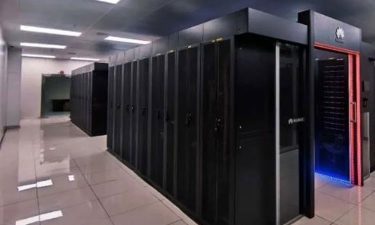

- Network estimates, system simulation, design examination, parameter definition and system design are appropriately planned based on railway requirements for wireless coverage. In this way, Huawei ensures that the network planning is precise, reasonable and scalable
- The solution implementation in metro scenarios encountered various difficulties, such as complex environments, unmanageable quality and tight schedules. To cope with the difficulties, Huawei provided professional, efficient and reliable services in terms of solution test, system configuration, commissioning and static acceptance. Huawei offered experienced industry experts and pioneering project management to effectively identify and control project risks, as well as responsive Research and Development (R&D) teams to support quick troubleshooting
- Metro operations feature high security requirements, complex coverage scenarios, difficult coverage control and unknown interference sources, which requires network performance optimisation. Huawei provided integrated solutions with dedicated network optimisation services, such as single-site verification, entire network optimisation, voice service optimisation, data service optimisation and system verification.
To find out more information, please visit the Huawei website here.
Related topics
Automatic Train Operation/Autonomous Train Control (ATO/ATC), Big Data, Digitalisation, Signalling, Control & Communications, Technology & Software








